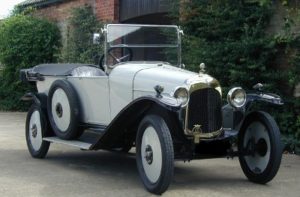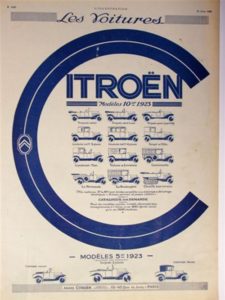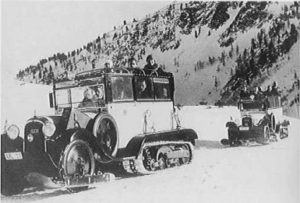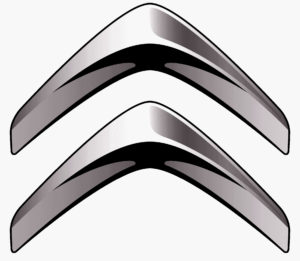The RWD Cars – 1919 to 1939
André Citroën was born and educated in Paris at the end of the 19th century and was to rival the greats in car production.
 Citroën started his helical gear company in 1902 and even today the double chevron is the Citroën car trademark.
Citroën started his helical gear company in 1902 and even today the double chevron is the Citroën car trademark.
In 1908 through family banking contacts he was asked to restructure the Mors company and raised production in five years from 120 to 1200 vehicles per year.
Citroën was mobilised as a reservist on the outbreak of the First World War and was alarmed at the lack of munitions supplies. He persuaded the military that he could within a year double the existing total shell production and set about importing advanced machinery from the USA. He designed and built a new factory, he achieved his target production as promised and reached 23 million shells per year by 1918 when he was employing 11,700 workers.
With his usual foresight he asked several car designers in 1915 to produce a luxury design with a Silent Knight engine for future production. He abandoned this project but asked Jules Salomon from the Le Zebre company to provide a design for a simple car for the mass market in the way Henry Ford had done with his T. He sold the large car design to Gabriel Voisin which he produced till 1927.
 This was to be the first mass-produced fully equipped car ready for the road in Europe. The Type A 10hp 1327cc was increased to 1452cc for the B2 in late 1921 and then the 5hp Type C in 1922 with a 856cc engine best known as the Cloverleaf, particularly aimed at women drivers. This was dropped in 1926 as it cost as much to produce as the larger cars. All steel bodies were used on the 1924 B10 again imitating what was being done in America. This was followed by the B12 with a revised chassis and front wheel brakes in 1925.
This was to be the first mass-produced fully equipped car ready for the road in Europe. The Type A 10hp 1327cc was increased to 1452cc for the B2 in late 1921 and then the 5hp Type C in 1922 with a 856cc engine best known as the Cloverleaf, particularly aimed at women drivers. This was dropped in 1926 as it cost as much to produce as the larger cars. All steel bodies were used on the 1924 B10 again imitating what was being done in America. This was followed by the B12 with a revised chassis and front wheel brakes in 1925.
In 1926 Citroën opened a factory in Slough to produce the B12 and avoid the purchase tax on imported vehicles. A year later the B14 with a 1539cc engine followed which was called the 12/24 in England. This was the last model to use the original Jules Salomon engine design. By this time the engine was becoming a bit dated but still Citroen production of 50,404 units which was more than the combined might of Renault and Peugeot.
From the start in 1919 a large selection of body styles could be order direct form agents who stocked parts, carried out servicing and repair and had parts lists and instructions. The first time this had been attempted by a European manufacturer.
Caterpillar track vehicles were produced in 1921 based on the B2 with Adolphe Kégresse’s help and these were to be the first vehicles to cross the Sahara. Many other trans- global expeditions were embarked upon and they were even used in 1934 in the Antarctic. They were able to rescue Admiral Byrd from certain death as it was too cold even to use dog sleds! The new AC4 and AC6 of 1628cc and 2442cc respectively were launched at the 1928 Paris Motor Show still with side valve engines but with improved performance.
The new AC4 and AC6 of 1628cc and 2442cc respectively were launched at the 1928 Paris Motor Show still with side valve engines but with improved performance.
In 1932 a further modernisation was carried out with new bodies, 8cv 1453cc, 10cv 1767cc and 15cv 2650cc engines, and with floating power gave a much smoother drive. Long distance endurance runs were carried out to prove reliability with the ‘Petite Rosalie’ cars.
Independent front suspension by torsion bar was also introduced on the later and larger cars. Various body styles, a total of 69 were available and due to the late production and unreliability of the front wheel drive car this model was carried on and still sold up to 1939. Even a diesel engine was fitted, developed by Ricardo in England in 1935 as well as the ohv Traction Avant engine of 1529cc.


